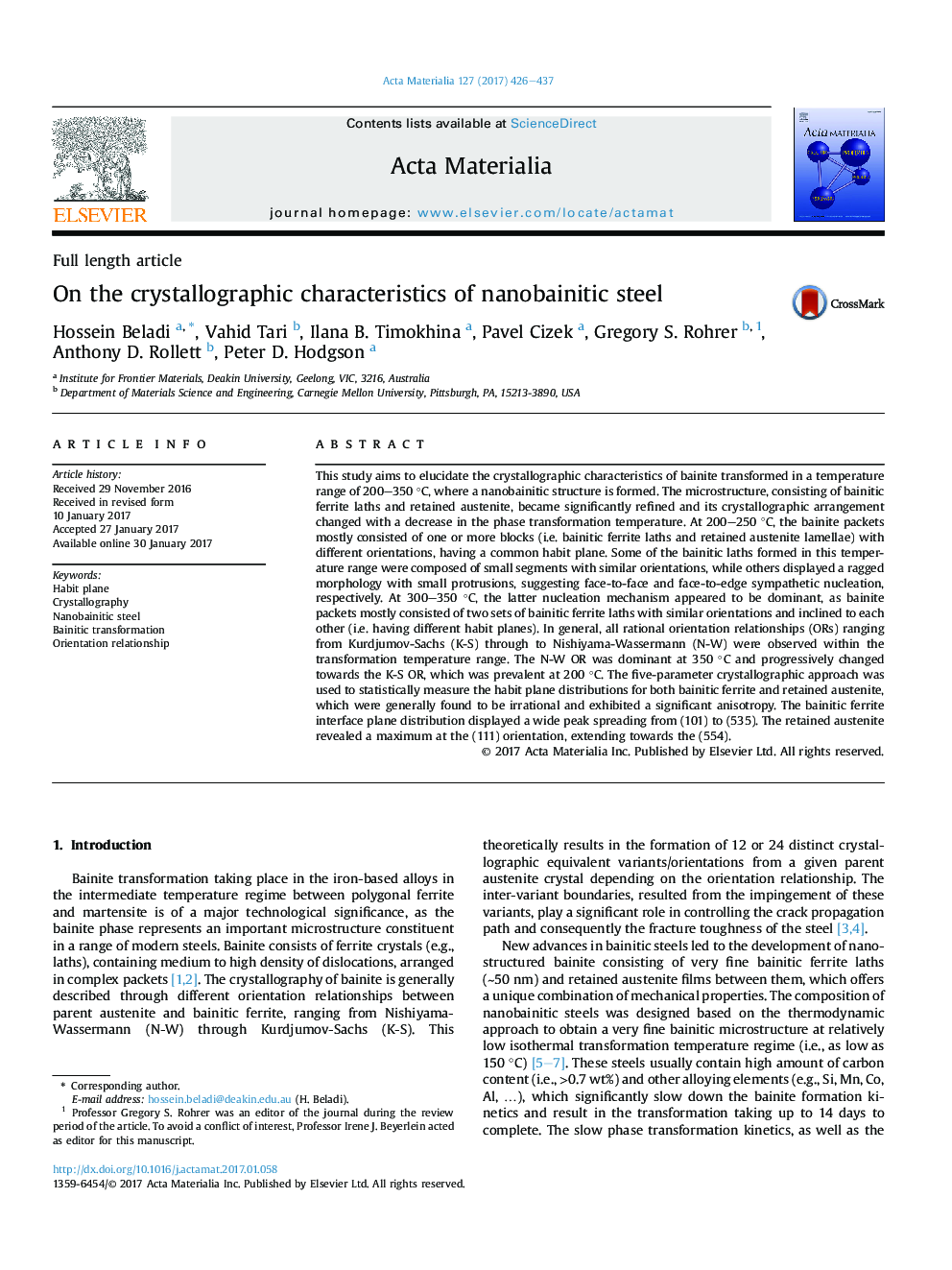| Article ID | Journal | Published Year | Pages | File Type |
|---|---|---|---|---|
| 5436346 | Acta Materialia | 2017 | 12 Pages |
This study aims to elucidate the crystallographic characteristics of bainite transformed in a temperature range of 200–350 °C, where a nanobainitic structure is formed. The microstructure, consisting of bainitic ferrite laths and retained austenite, became significantly refined and its crystallographic arrangement changed with a decrease in the phase transformation temperature. At 200–250 °C, the bainite packets mostly consisted of one or more blocks (i.e. bainitic ferrite laths and retained austenite lamellae) with different orientations, having a common habit plane. Some of the bainitic laths formed in this temperature range were composed of small segments with similar orientations, while others displayed a ragged morphology with small protrusions, suggesting face-to-face and face-to-edge sympathetic nucleation, respectively. At 300–350 °C, the latter nucleation mechanism appeared to be dominant, as bainite packets mostly consisted of two sets of bainitic ferrite laths with similar orientations and inclined to each other (i.e. having different habit planes). In general, all rational orientation relationships (ORs) ranging from Kurdjumov-Sachs (K-S) through to Nishiyama-Wassermann (N-W) were observed within the transformation temperature range. The N-W OR was dominant at 350 °C and progressively changed towards the K-S OR, which was prevalent at 200 °C. The five-parameter crystallographic approach was used to statistically measure the habit plane distributions for both bainitic ferrite and retained austenite, which were generally found to be irrational and exhibited a significant anisotropy. The bainitic ferrite interface plane distribution displayed a wide peak spreading from (101) to (535). The retained austenite revealed a maximum at the (111) orientation, extending towards the (554).
Graphical abstractFigure optionsDownload full-size imageDownload high-quality image (259 K)Download as PowerPoint slide
